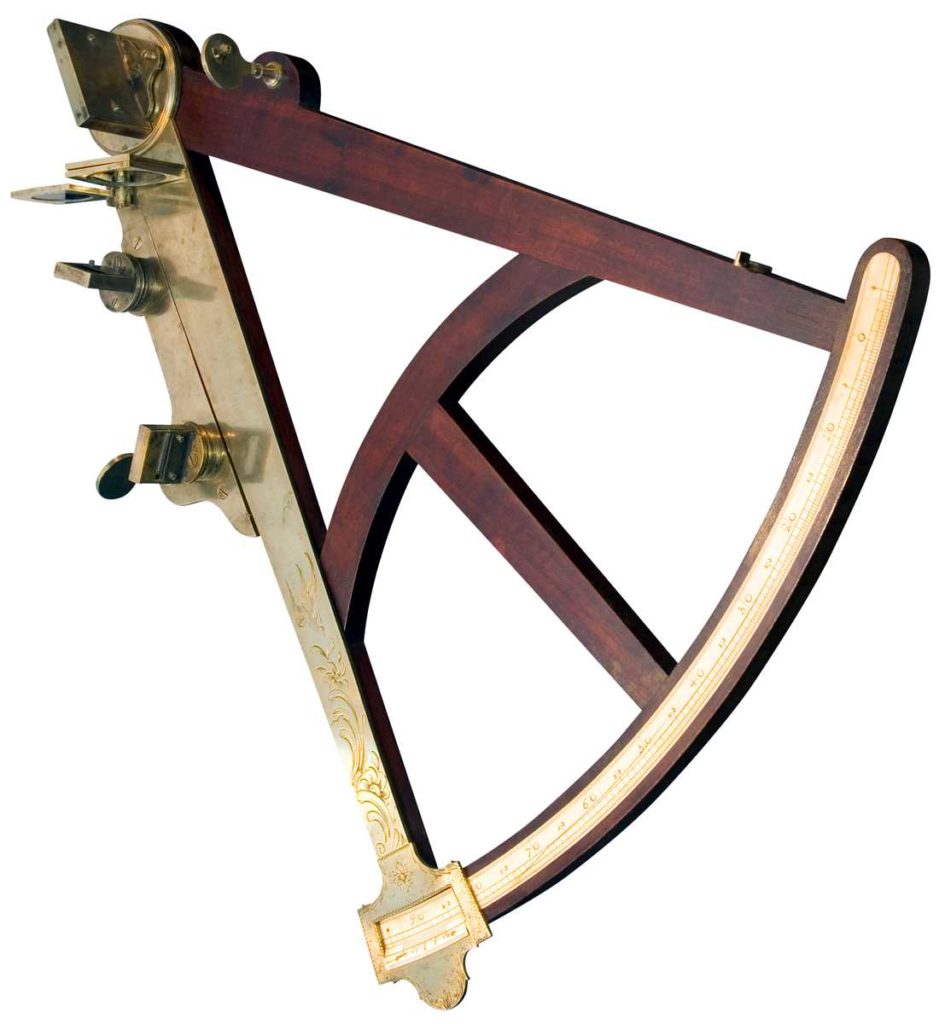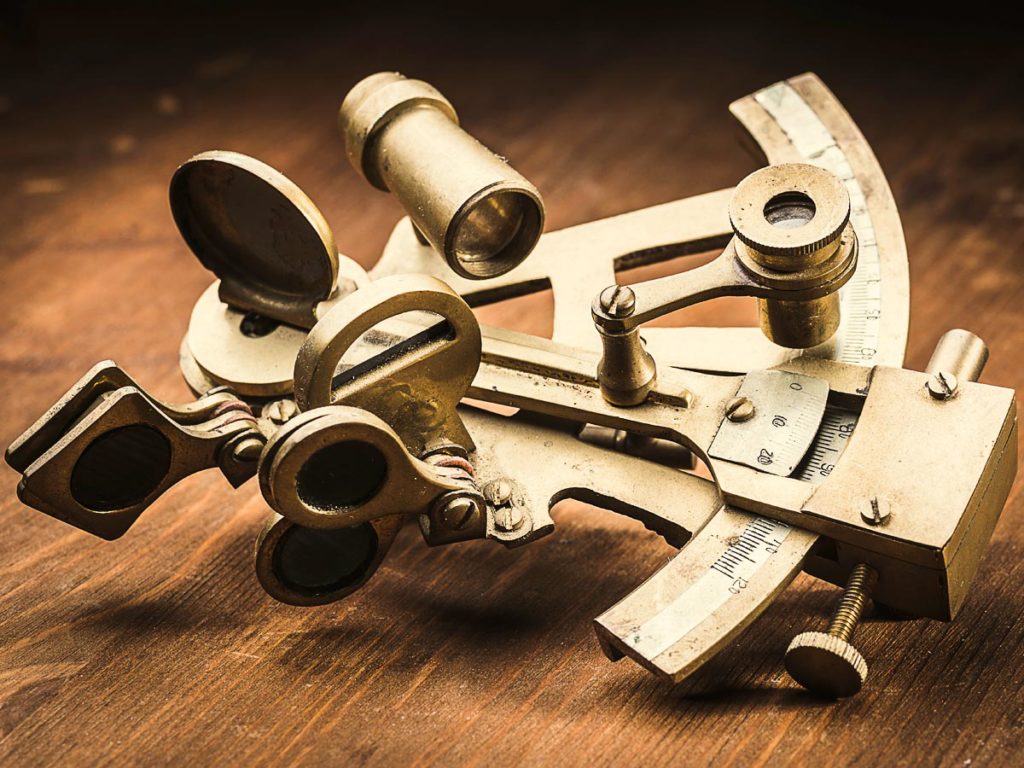An antique sextant is a wonderful maritime collectible to behold. Its intricate beauty underscores the fact that, for all our modern technology, the simple ingenuity of tools invented centuries ago still works fine on the sea. Indeed, sextants still have advantages over modern devices that rely on electricity or other accoutrements to work properly.
Antique sextant technology was perfected after the invention of the octant in the 1730s. An octant has an arc of 1/8 of a circle, or 45°; a sextant’s arc is 1/6 of a circle (60°). These proved the most popular of the various instruments that would eventually be devised. (There were octants, quintants, and quadrants, each with a different arc.)
See also: Rare and Antique Nautical Telescopes and Spyglasses
These days, anyone looking for a unique decorative element for a nautical-themed space can use a great sextant. Collectors of maritime antiques and those with the sea in their heart (or in their lives) will love browsing the one-of-a-kind antique sextant sales listings online. The pieces are undeniably beautiful, each and every one.
How an Antique Sextant Works
The purpose of the antique sextant was to measure the apparent distance of an object, often a celestial object like the sun or other star, above the horizon. This was done by pointing the instrument in the general direction of the horizon and sliding a moveable piece down. The user had to line up the object in question in the bifurcated-view scope. Then the sextant was tilted back and forth to make sure it was in the center. Finally it was just a matter of reading the number where the moveable piece had been stopped along the arc.
More: Vintage and Rare Antique Compasses

By taking a measurement of the sun at noon, a vessel’s latitudinal position could be ascertained. By comparing two objects of known location, the boat’s position could be triangulated from the readings of the sextant. Basic and practical, the sextant is still used as a backup tool for navigation on boats worldwide. A nice illustrated guide to using a sextant can be found on Wikihow.
Browse 152 current Antique sextants for sale offers here
An antique sextant will generally be of the half-horizon or “traditional” type. These divide the view in the telescope in half using two mirrors. The horizon shows on one side, the object being spotted on the other, similar to a split-screen TV broadcast. Whole-horizon sextants show the entire horizon but are usually thought of as less versatile.
Antique Sextants Today
A collector may buy an antique sextant for its value as a beautiful piece of rare vintage art rather than a tool for navigation. This is due to several factors, not the least of which is that a sextant is a very delicate instrument. Any slight bend in the arc can cause it to be unreliable. Modern mariners guard their sextants like possessive hawks, keeping them from harm and from children. Great care must be taken even when removing sextants from their cases.
Antique and rare vintage boat barometers
Antique sextants’ appeal is due to the classic workmanship and the specific history of each piece. It’s hard to find a bad one for sale, and the relatively low price of antique sextants makes them a great investment, no matter what your purpose for acquiring one may be.










